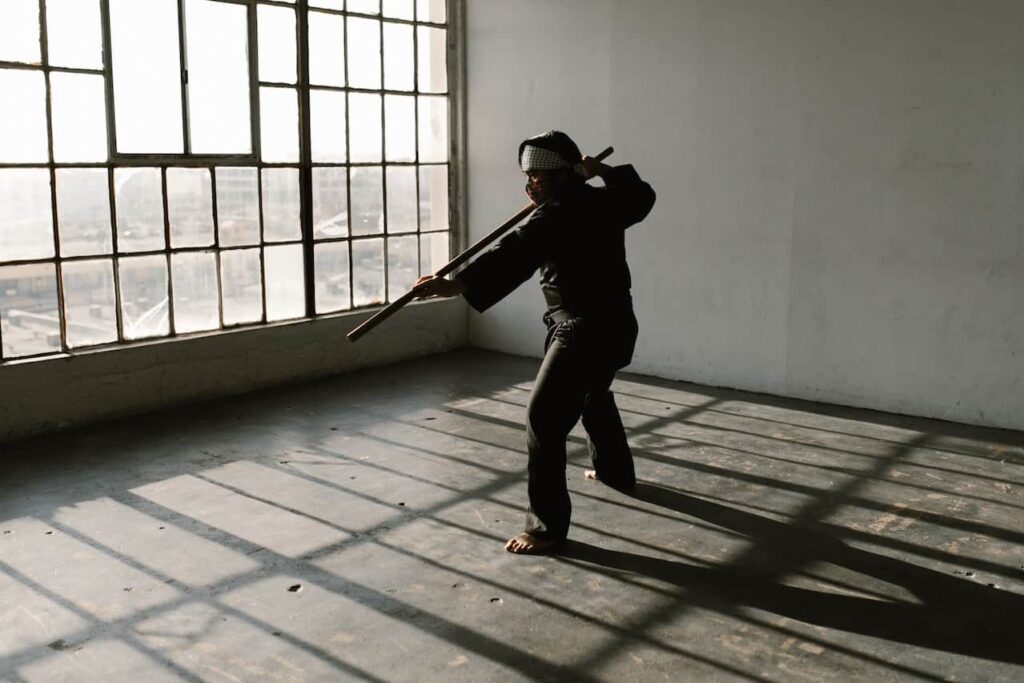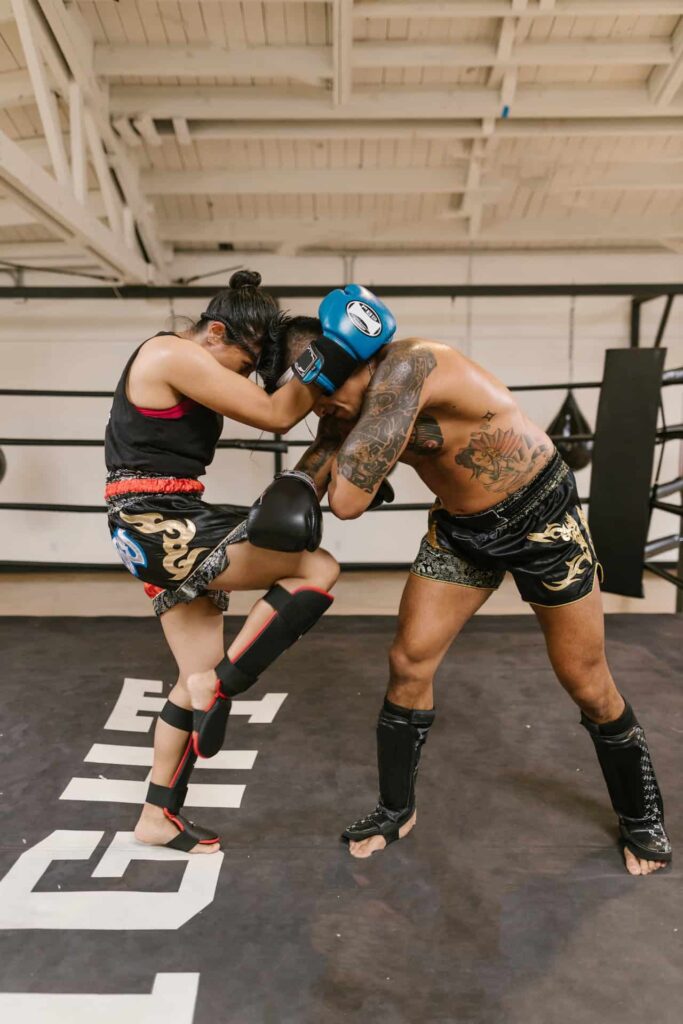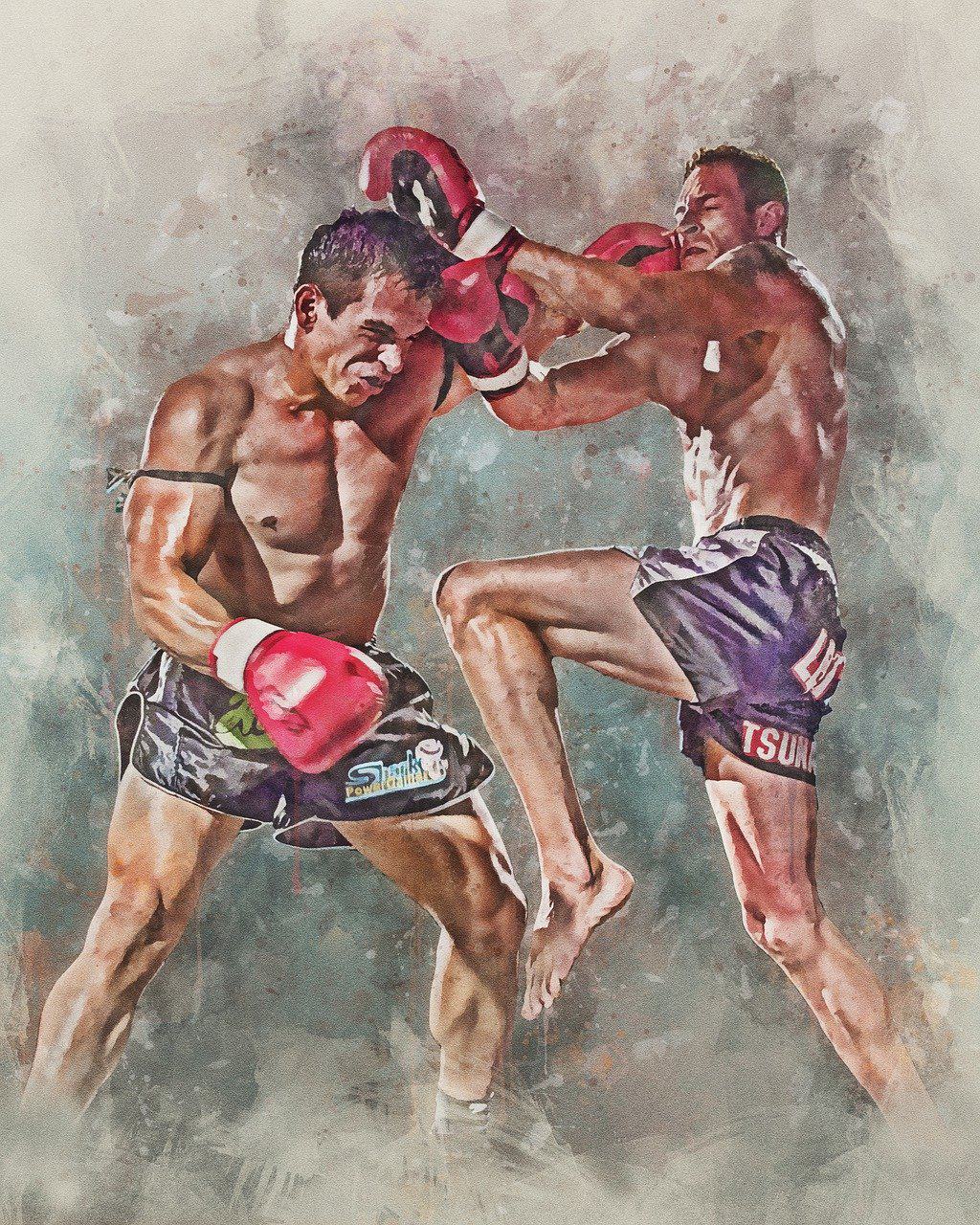In the realm of martial arts, where discipline meets power and technique clashes with endurance, there has always been a fascination with pitting different styles against one another and in this post we delve Goju Ryu vs Muay Thai.
Both martial arts have earned widespread acclaim for their unique strengths and impressive combat prowess.
But when it comes to the ultimate question of supremacy, which style will emerge victorious?
So let’s embark on an exploration of these two incredible martial arts styles.
Brace yourself for an in-depth analysis of their techniques, training methods, strategies, and historical significance.
Join us as we navigate the fascinating journey towards answering the age-old question: Goju Ryu vs Muay Thai, which style wins?
OK, so while we won’t really get into which style is superior, this post will look closely at the similarities in fighting strategies and techniques between these two styles as well as which style is better for self defense.
So Let’s get into it.
Goju Ryu – “hard-soft” style
Goju Ryu Karate is a traditional style of martial art that originated in Okinawa, Japan.
Goju Ryu was developed by Chojun Miyagi (1888-1953) during the early 20th century.
The name “Goju Ryu” translates to “hard-soft style,” reflecting the style’s emphasis on both powerful striking techniques and circular, flowing movements.
Goju Ryu Karate has its roots in the indigenous Okinawan fighting styles, which were influenced by Chinese martial arts such as Fujian White Crane and other Chinese boxing systems.
The exchange of cultural and martial knowledge between Okinawa and China contributed to the development of Goju Ryu Karate.
Chojun Miyagi, the founder of Goju Ryu, trained under the tutelage of Kanryo Higaonna, an Okinawan martial artist who had studied in China.

Miyagi combined the techniques he learned from Higaonna with his own insights and experience to create the Goju Ryu style.
Goju Ryu Karate focuses on cultivating both physical strength and internal energy (known as “ki” or “chi”) through rigorous training, including kata (a series of prearranged movements), kumite (sparring), and various conditioning exercises.
The style incorporates a wide range of techniques, including strikes, kicks, throws, joint locks, and grappling.
Over time, Goju Ryu Karate spread beyond Okinawa and gained popularity in Japan and around the world.
It is known for its practicality, efficiency, and the balance between hard and soft techniques.
Today, Goju Ryu Karate continues to be practiced as both a martial art and a means of self-defense.
Art of 8 Limbs – Muay Thai
On the other side of the ring stands the revered “Art of Eight Limbs,” Muay Thai, hailing from the Kingdom of Thailand.
Muay Thai, a cultural icon steeped in history, embodies relentless power and resilience.
The style harnesses eight weapons of combat: fists, elbows, knees, and shins, with fighters renowned for their devastating strikes and impressive clinch work.
With an unwavering focus on conditioning and sheer physicality, Muay Thai practitioners have earned a reputation as some of the most formidable fighters in the world.
The style is born out of the Ancient battlefield fighting art of Muay boran which was trained and used by Thai warriors in combat.
Today muay thai is a world recognised combat sport but its origins lie in war and combat.
Goju Ryu vs Muay Thai: Fighting Strategies & Techniques
Although two very differnt and distinct styles, Goju Ryu and muay thai have a lot of similarities when it comes to fighting techniques, strategies and philosophy.
We look at the common similarities below.
Flashy Techniques are Not Trained or Used in either Style
Both Goju ryu and muay thai do not use or train any flashy techniques such as spinning techniques or jumping high kicks.
Instead, both Goju ryu and muay thai focus on effective and powerful strikes and efficient use of energy to deliver and block or avoid blows.
While spinning elbows are some spinning kicks are used in muay thai, this is more the exception rather than the rule.
And instead muay thai relies on effective, efficient fight proven techniques which are the break and butter of muay thai practitioners in fights.
Goju ryu is based on the White Crane style which is also focussed on short and close range combat and not on jumping or spinning attacks.
Both styles operate well in close and short range
Goju Ryu Karate emphasizes fighting at close range and short-range combat.
The style focuses on techniques suitable for fighting in tight spaces, such as in grappling range or within arm’s reach.
Practitioners are trained in close-quarters strikes, joint locks, throws, and takedowns to neutralize threats effectively.
Muay thai also operates very well in close and short range where effective and powerful elbows and knees are delivered with maximum power and efficiency.
The close range grappling of the muay thai clinch is trained very extensively in muay thai.

And the muay thai clinch uses many entries, escapes, knees, elbows and a wide range of takedowns such as trips, sweeps and throws.
Most of the time Goju-Ryu also involves grappling, sweeping, breaking, and different types of arm and neck locks.
This makes it even more dangerous on close-quarters, since not only will they take out the opponent with a powerful strike, but if it’s not enough, they will slam them to the ground and hold them there.
Goju Ryu and Muay thai Focus on Timing and Rhythm
Goju Ryu Karate emphasizes timing and rhythm in combat.
Practitioners learn to read an opponent’s movements, anticipate attacks, and effectively counter or evade them.
By understanding and disrupting an opponent’s rhythm, Goju Ryu Karate practitioners can gain an advantage in the fight.
Rhythm in fighting is incredibly important in muay thai as demonstrated by the signature muay thai ‘marching’ in stance.
And disrupting your opponents rhythm to off balance them and intercept or counter their attacks is a major part of muay thai training and fighting.
Main Differences: Goju Ryu vs Muay Thai
We have looked at the similarities between these two styles when it comes to fighting techniques and strategies.
Below we look at the more obvious differences between these two unique and powerful fighting styles.
Clinch Work:
Muay Thai places a significant emphasis on clinch work, which involves close-range grappling and controlling an opponent’s movements using the clinch position.
Goju Ryu Karate incorporates some grappling techniques but does not specialize in clinch work to the same extent.
Use of Elbows and Knees:
Muay Thai practitioners extensively utilize elbows and knees as devastating striking weapons.
In contrast, while Goju Ryu Karate includes some elbow and knee strikes, they are not as central to the style’s repertoire.
Training Methods:
Goju Ryu Karate training emphasizes kata (forms), kumite (sparring), and conditioning exercises.
It often incorporates traditional training methods such as meditation, breath control, and body conditioning.
Muay Thai training includes pad work, heavy bag training, sparring, and conditioning exercises specific to developing the strength and endurance required for the art’s intense nature.
Fighting Stance and Footwork:
Goju Ryu Karate typically utilizes a more rooted and stable stance, focusing on strong stances and precise movements.
Muay Thai employs a more mobile and dynamic fighting stance, with footwork that enables quick movement, evasive maneuvers, and effective striking angles.
Goju Ryu vs Muay thai for self defense?
Which style is better suited for self defense?
This is a tough question to answer because both styles have very valuable aspects when it comes to self defense and real world combat.
But – Goju ryu could have the upper hand in this case as muay thai is focussed solely on competition and fighting in the ring under established rules and regulations such as weight classes, timed rounds and protective gear like gloves and groin guards.
Goju ryu on the other hand has more focus on real world combat outside of the ring and without rules.
Another particular advantage Goju ryu could have when it comes to self defense is the training in the use of weapons.
As self defense and real world combat is unpredictable weapons could. be used at any time and even nearby objects could be picked up and used as weapons.
Goju ryu Kobudo is the practice or training with traditional Okinawan weapons including:
- staff
- sai
- tonfa
- nunchaku
- kama
But muay thai is also valuable for self defense in that it focuses on real world effective fighting techniques that are proven in the ring and in sparring also.
The muay thai clinch is a particularly useful combat technique/strategy to train for self defense that can be applied in real life against attackers of various sizes.



